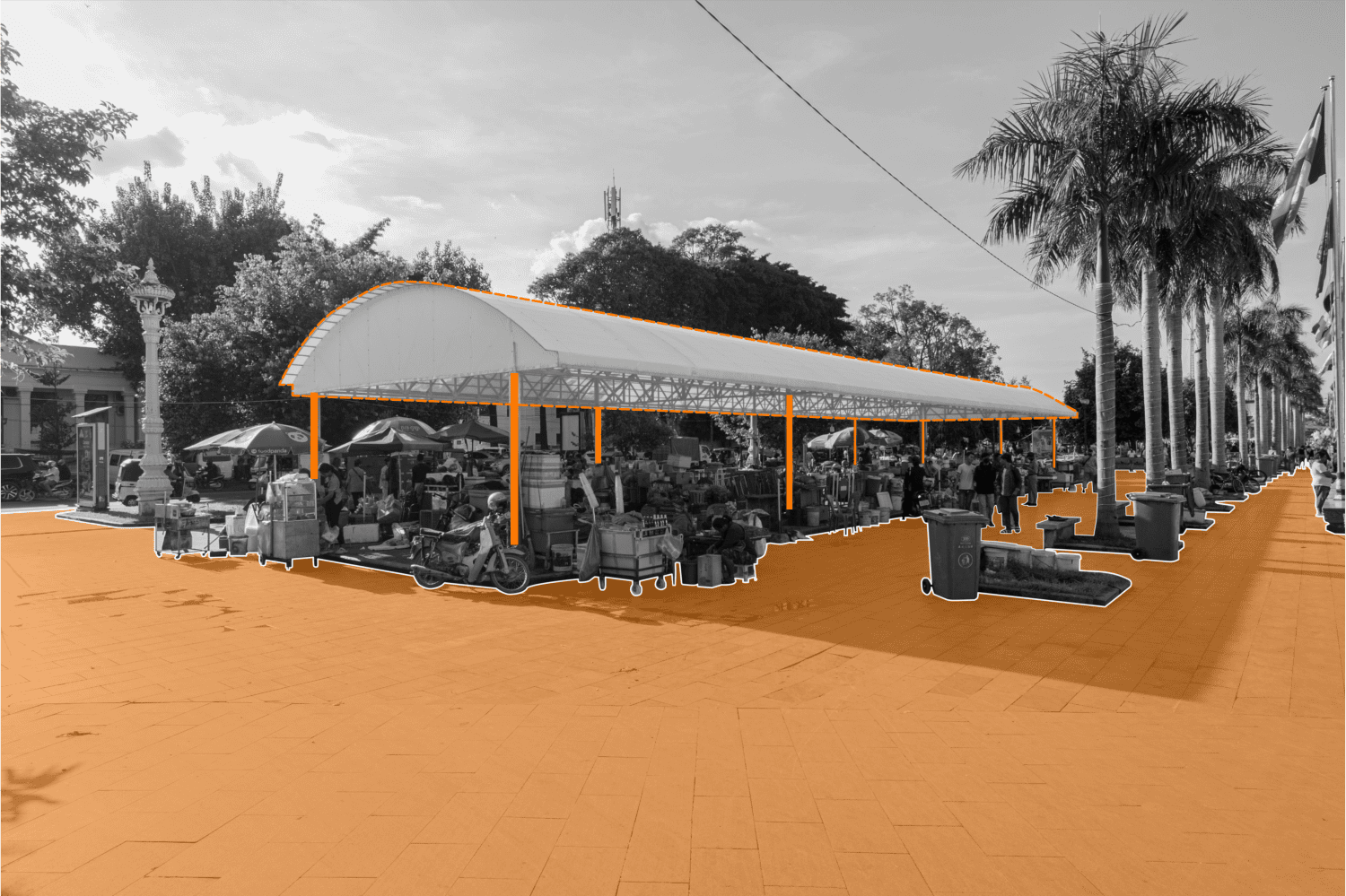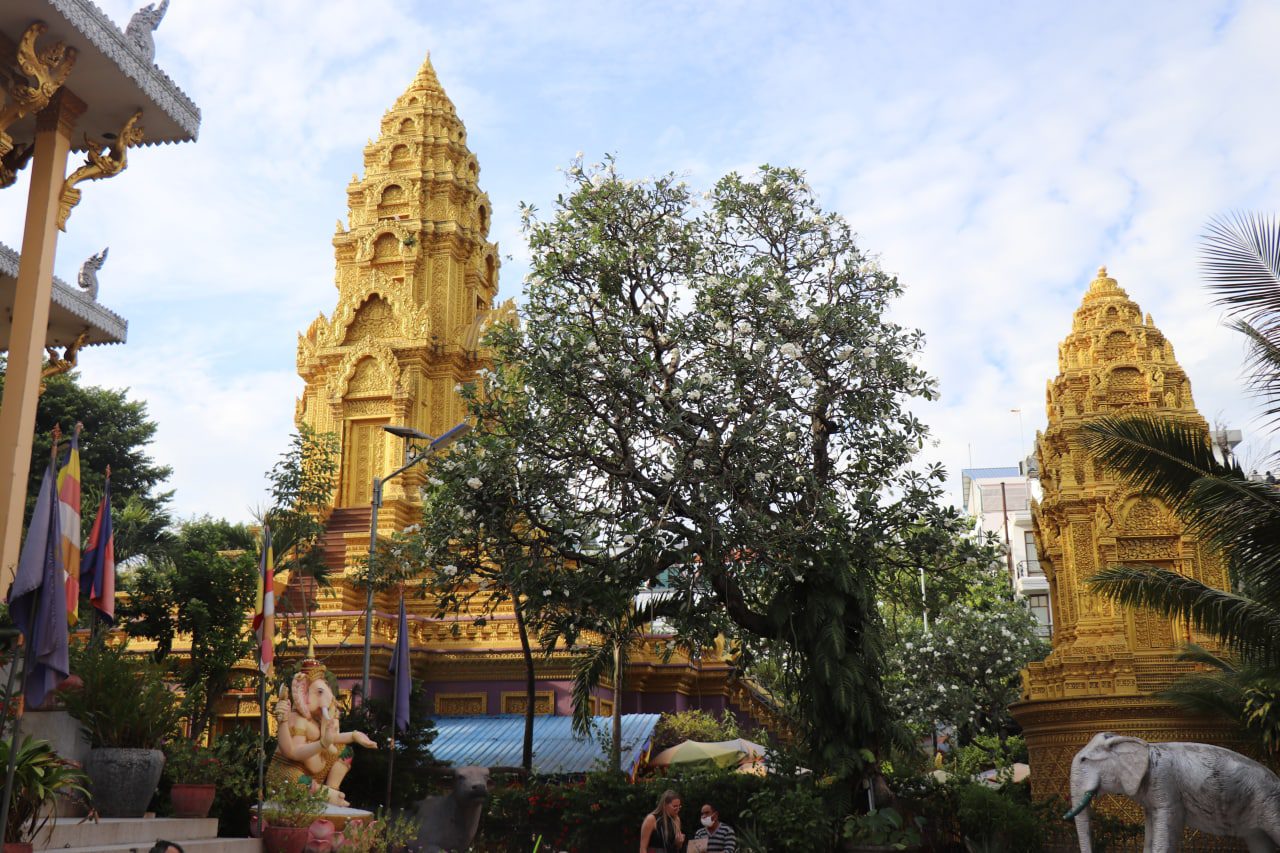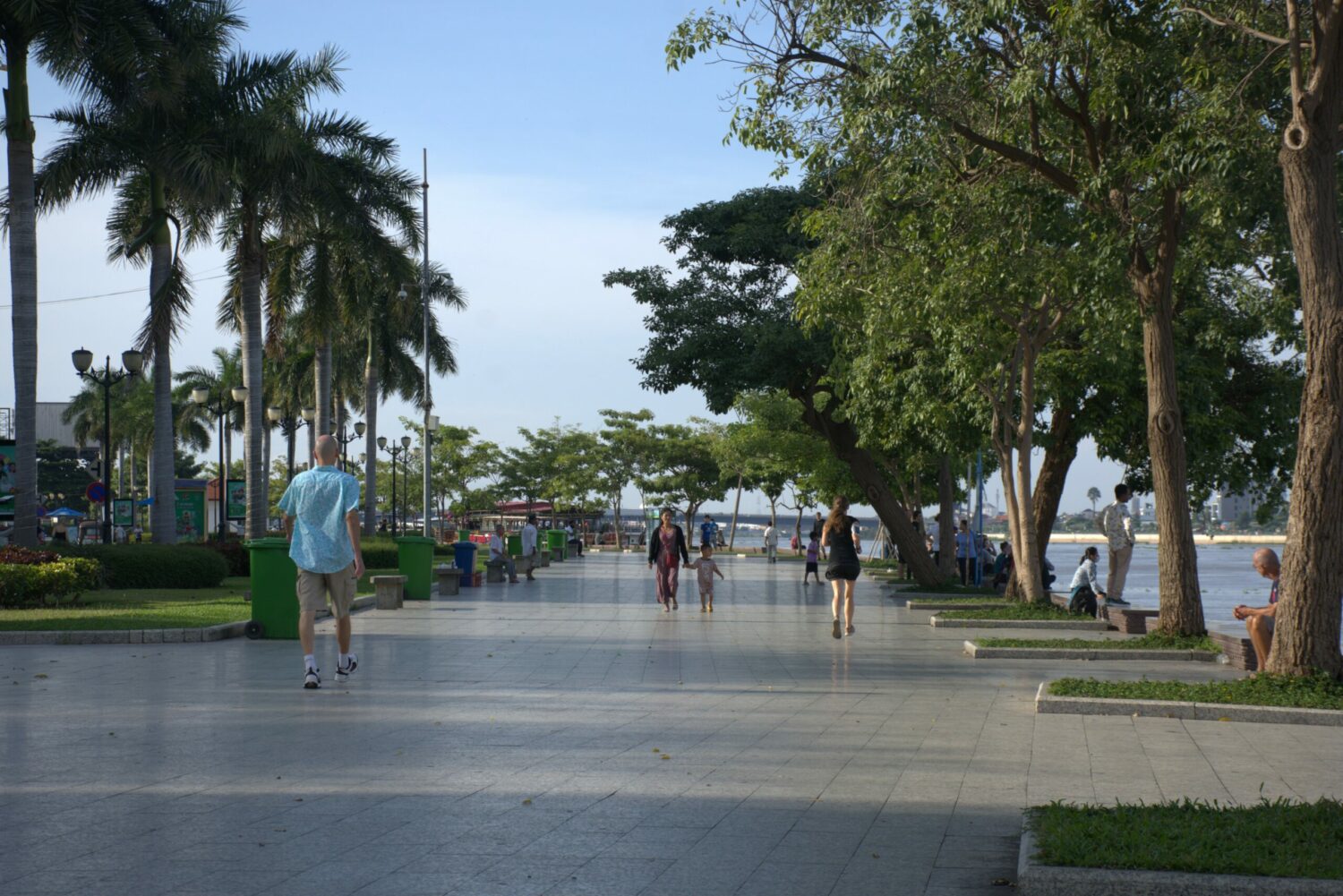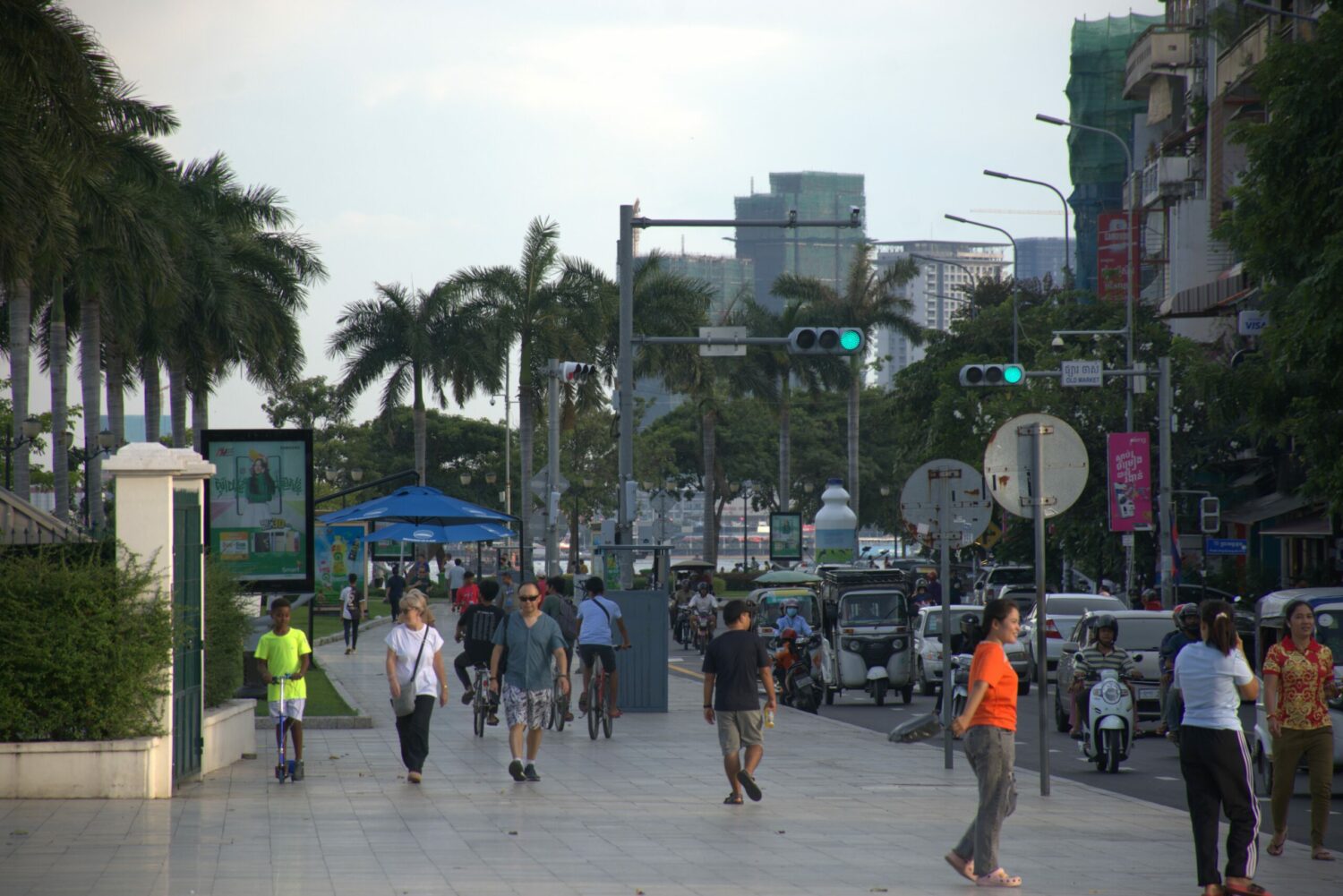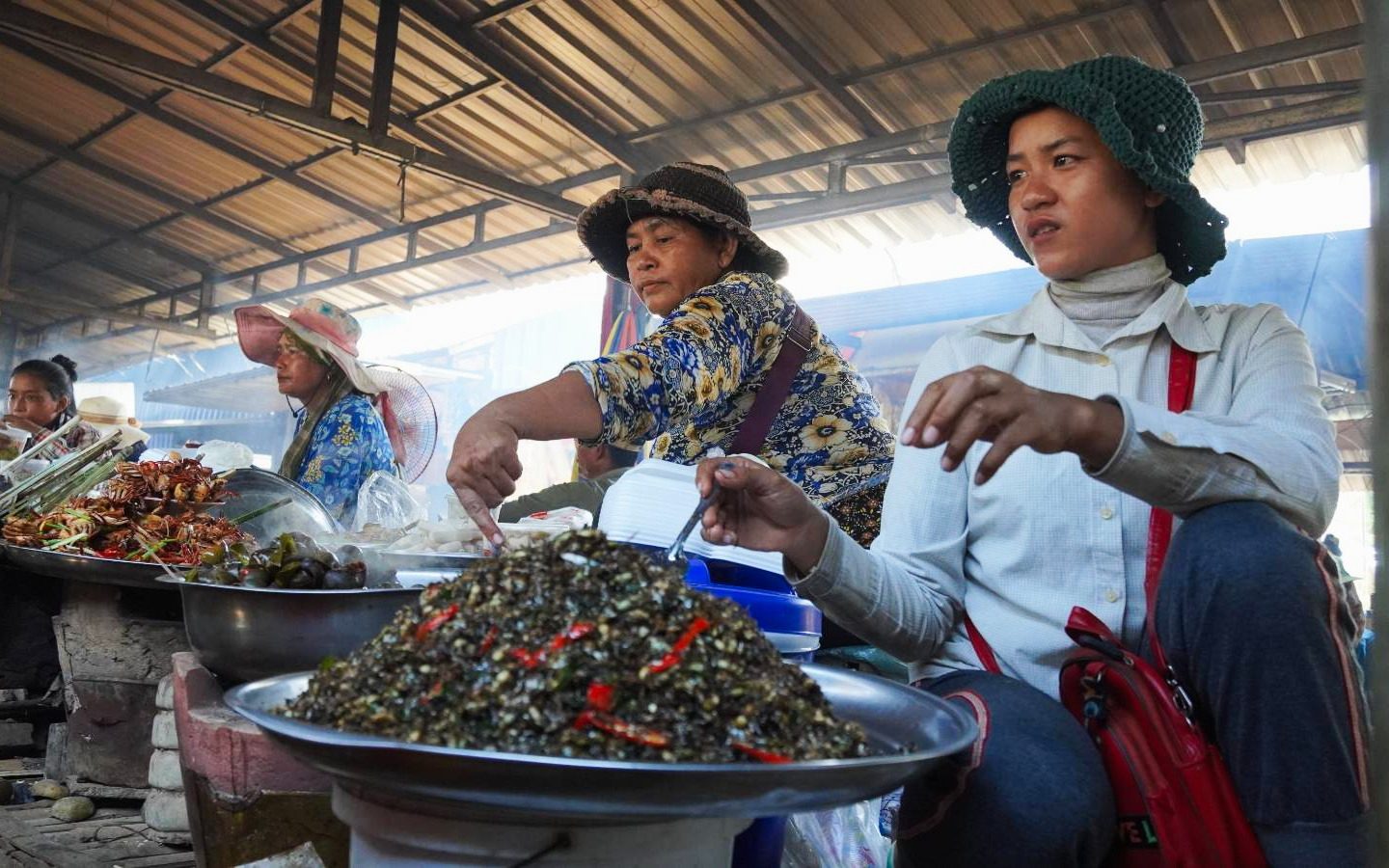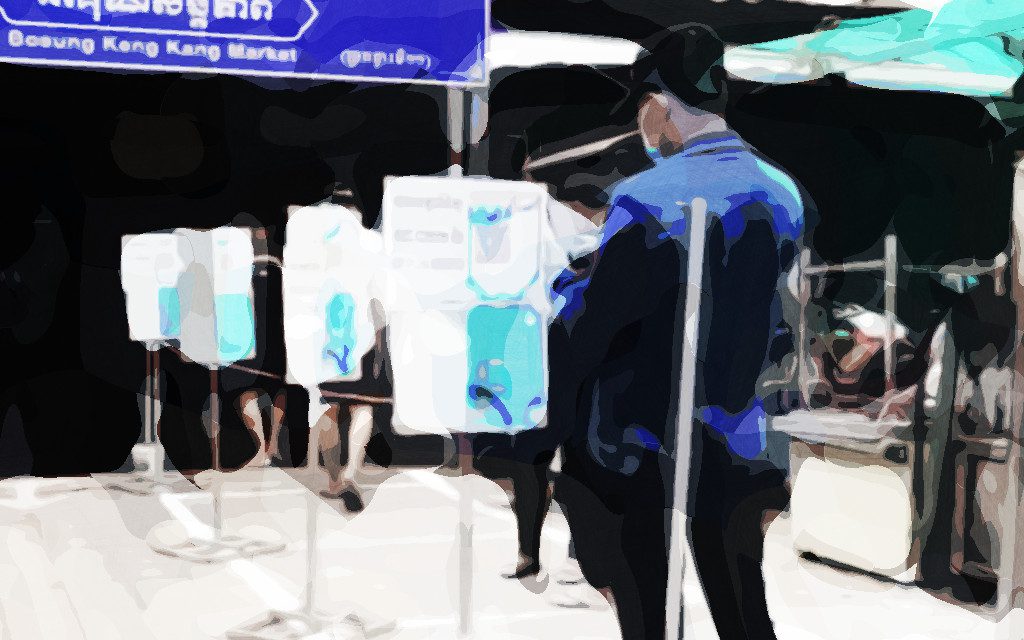Picture Phnom Penh’s riverside without its street hawkers. It would be a lonely place lacking in the activity, vibrancy and personality that makes this space special. It would be a street without life, lacking spontaneity and convenience.
Although some may prefer this alternative in theory, in practice both sellers and visitors would be worse off if this becomes a reality. Vendors are a critical factor in bringing the riverside to life. They are indispensable to riverside activities and act as linchpins in multiple unique riverside social and economic ecosystems.
To serve visitors who come to the riverside looking for spiritual fulfillment, there are vendors who sell lotus flowers and other offerings at Preah Ang Dorngkeu shrine. For visitors of all ages there are vendors who sell food and beverages, num banh chok, and other snacks. These vendors make scenic dusk picnics and gatherings of friends possible. And for families with children, there are vendors who sell corn to feed the pigeons, as well as toys, games and balloons to entertain the youngsters. Even if you buy nothing from these vendors, you still benefit from the ambiance they attract and create.
Any redesign efforts of this public space must include infrastructure that supports these street vendors and enhances their livelihoods. Phnom Penh should consider creating a brick and mortar “vendor hub” to organize groups of street vendors into one location, thus creating a lively de facto market, and solidifying the vendors’ position in this part of this city.
Vendors Are Undervalued
Historically, beautification efforts in public spaces throughout Phnom Penh have involved cracking down on or even removing street vendors.
In 2017, for instance, Phnom Penh city hall doubled down on calls to enforce bans on vendors who work on the streets and parks of the capital, leading to a protest by dozens of sellers who were based near the Council of Ministers headquarters. Reasons put forward for this crackdown were hygiene, safety, public order and traffic congestion.
In 2020, a vaguely worded draft law on public order was proposed that included measures purportedly meant to clean up Phnom Penh’s streets.
“This law aims to ensure public order management by maintaining order, aesthetic value, sanitation, cleanliness of the environment, quietness, social stability, preservation of national tradition, and the dignity of citizens,” Article 1 of the draft law read. Rights groups, however, worried the law would effectively criminalize the businesses of street sellers, among other far-reaching impacts.
But instead of prioritizing these types of initiatives which rid public spaces of vendors, Phnom Penh should instead lean into the role vendors play in our lives, and provide them with clean, orderly, dedicated places in which to do their work. This would not just be in line with what civil society has been calling for, but also would correspond with goals authorities have set for making the work of street vendors more official, as well as safer and more hygienic, for the vendors themselves, for their customers, and for the spaces they occupy.
A High Street for Vendors
A conversation about the needs of riverside vendors fits in nicely with what has already been discussed around the benefits of riverside pedestrianization. A car-free riverside would allow even more visitors to walk and eat in this public space, or leisurely browse and shop for items.
By making a once traffic-heavy road into a walkway for riverside goers, the owners of existing shops along the riverside would be the first stakeholders to benefit, particularly restaurants and cafes that are able to arrange for shop-front seating. This not only allows shoppers to have a safer and fresher experience free of vehicle smoke and traffic, it also creates a multisensory experience for people walking by.
But another group which clearly stands to gain from a more vibrant riverside free of car traffic are mobile street vendors and hawkers. Unlike physical shop owners, these sellers have never had space dedicated to them in this area.
Let’s imagine a dedicated, fully serviced, brick and mortar vendor hub along the riverside where vendors are able to sell their goods under shade, and imagine the benefits this hub might contain for both vendors and for their customers.
Historically, beautification efforts in public spaces throughout Phnom Penh have involved cracking down on or even removing street vendors.
Vendor Hub in Detail
Obviously a chief concern when it comes to street food vendors, for authorities and consumers alike, is health and safety. A dedicated vendor hub for these types of sellers is an excellent way to address this issue head-on. A vendor hub would not just provide a seating area for buyers to sit and enjoy their food once they’ve purchased it, but as part of this kind of hub there would also be running water and sinks for them to wash their hands before and after eating, as well as trash cans to dispose of waste.
To maintain separation between the vendors and the seating area, these washing sinks could be designed as a double-sided bar. One side for the riverside goers to wash their hands and another side for the vendors to wash their hands and their utensils.
In order for this space to provide the maximum value to the riverside promenade, it should be located in an area that gives vendors their pride of place and allows visitors to come and go with ease. Ample bicycle parking and e-bike charging stations next to the vendor zone would mean customers could pull up at any time of day and stay for as long as they like. Cyclists and pedestrians can make a stop at each vendor zone to browse their wares or purchase food, or use public restrooms that could be built adjacent to the vendor zone.
To avoid feuds over selling spots, vendors might be asked to acquire a permit at a very low price. And each vendor zone could be dedicated to selling only one category of products. For example, food vendors sell food in a food zone while cloth vendors sell in a clothing zone.
A Public Space for All
Street vendors dotting riverside’s promenade give the space a life of its own. Since mobile vendors are already part of the riverside, fully embracing them and intentionally incorporating them into a public space through the creation of a vendor hub would elevate this location. Street vendors and shops along the riverside, as well as their customers, should be able to reap the benefits of a humanized riverside.
Prak Norak is a Future Forum junior researcher and an architecture student currently studying at Pannasastra University. His interests are art and small-space architecture, where man-made buildings harmonize with nature.


